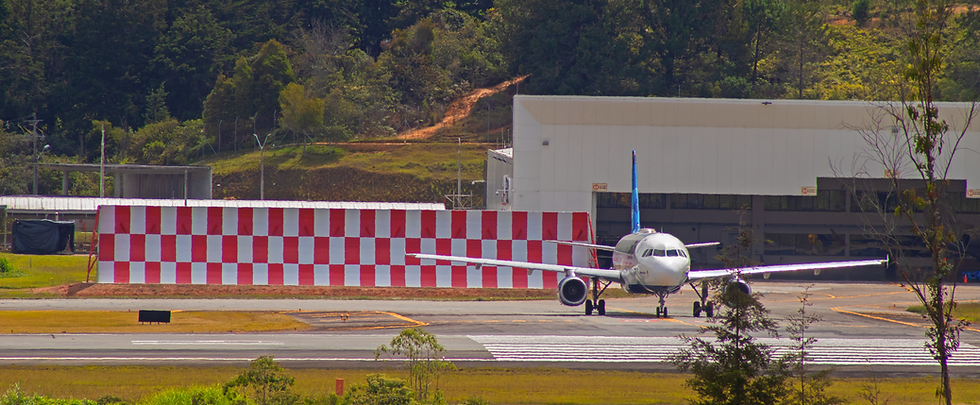Jet Blast Deflectors: Why airports need them?
- Juan Correa
- 11 minutes ago
- 2 min read
Modern airports are facing huge challenges in capacity, as the demand is growing, with more and more airplanes, passengers and obviously more operations per day.
That’s why several airports across the USA and worldwide are focused on growing to cope with this situation, but at the same time, modern jet engines are made to be monsters, real powerhouses of raw energy.
Even at idle power, a modern turbofan engine has a blast that is like a thunderstorm, enough to knock over lightweight equipment, blow debris or even pose a risk factor to people nearby.
But when the pilot pushes the throttle to taxi (around 10% to 20% power to start moving the airplane around the tarmac) it becomes a hurricane category 1, that’s why the airports use long distances among airplanes and vehicles, people or buildings. Now we understand the large areas required and the long pushback to safe spots.

And then a turbofan engine at takeoff power transforms this area into a severe hurricane territory, almost any vehicle can be flipped, small objects become dangerous projectiles and the superheated air coming out from the turbines is like an inferno.
? So how do airports deal with this massive force?
One approach is to create large buffer zones to keep airplanes, people, vehicles, and buildings in safety apart. However, this requires a lot of space, and since most airports are surrounded by cities and roads, expanding isn't always feasible. Airport operations are now slower and less efficient. This contributes to crowded airports and longer flight times—not because planes fly more slowly, but because of delays during the ground operations.
Another way is to use the strategic location of jet blast detectors, which can provide:
1. Redirection of the blast upwards, over the staff and vehicles.
2. Block noise propagation by the use of gapless deflector with acoustic properties.
3. Reduce the blast speed to a safe level.
Game-changing deflectors can increase productivity, create safer & faster operations, as the aircraft can taxi closer, reducing wasteful distances and simplify operations.
And the time saved during ground operations is used to become available to boost overall airport and airplane utilization, it means that more passengers can be transport during the same period, as per day, per month, per year.

An example of application is in service at Rionegro airport, Colombia, where an executive hangar was located close to turning taxi line, this was a ingenious use of the available area to provide land for this private jets company, but also had a drawback about the jet blast of the airplanes that taxi from the parallel street to the takeoff airstrip. It becomes frequently that some airplanes (the heavy ones) during the turn projected a blast to the hangar and the small airplanes parked there.
That is why the solution came from a jet blast deflector, which mitigates the noise, provides redirection of the gases and reduces the blast speed to a level even lower than a breeze.
Now the taxi operations have become safer, more agile and the airport Jose Maria Córdova is getting more from the land / area available.


Commentaires